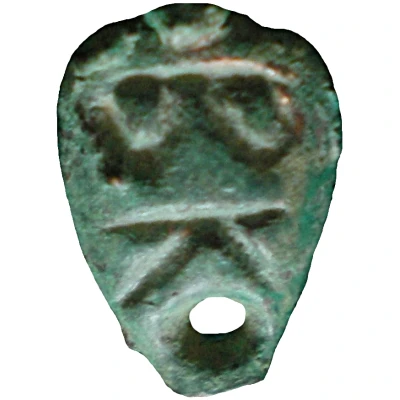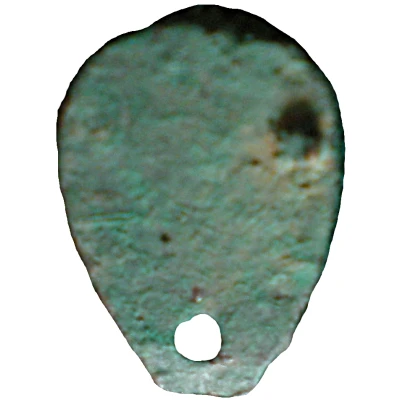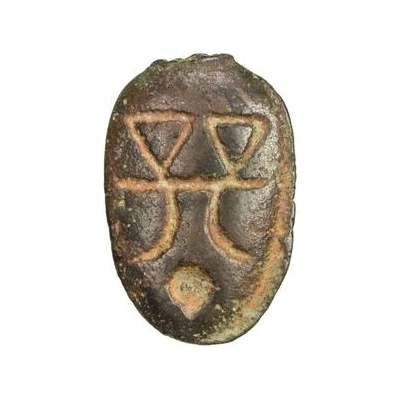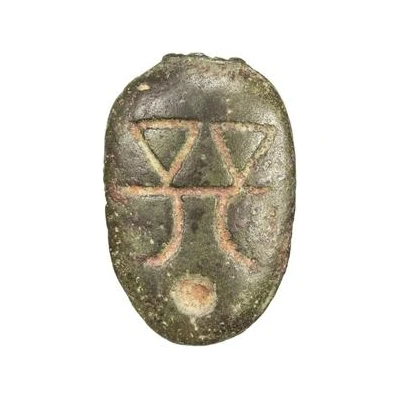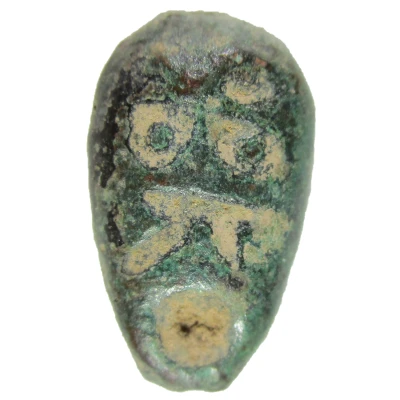
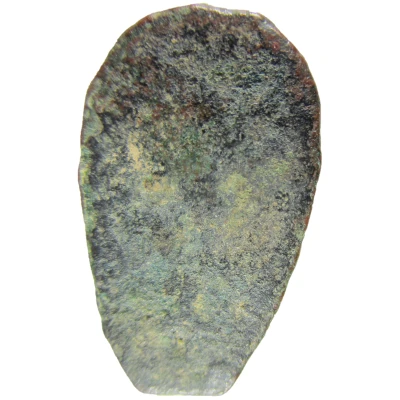

© Ollisaarinen (CC BY)
Ant-nose Money "Ghost face" type; with upper line 400 BC - 220 BC
| Bronze | 2.92 g | - |
| Issuer | State of Chu (Warring States) |
|---|---|
| Type | Standard circulation coin |
| Years | 400 BC - 220 BC |
| Currency | Ant-nose money (401-220 BC) |
| Composition | Bronze |
| Weight | 2.92 g |
| Size | 18 mm |
| Thickness | 3.6 mm |
| Shape | Oval (With a hole) |
| Technique | Cast |
| Orientation | Medal alignment ↑↑ |
| Demonetized | Yes |
| Updated | 2024-10-09 |
| Numista | N#237957 |
|---|---|
| Rarity index | 85% |
Reverse
Blank (uniface).
Edge
Plain
Comment
While this is the most common type of ant-nose money, the depicted ideogram still remains debated. Bei (貝; for shell) is commonly accepted, although Jin (晋) is another theory.There is a lot of variation is size and weight.
Hartill places the dates of these pieces to 400-220 BC; Heinz Gratzer's and A.M. Fishman's "The First Round Coins of China" places the dates of these pieces to 581-448 BC from King Gong to King Zhao.
Interesting fact
One interesting fact about this coin is that it features a unique "ghost face" design on the obverse (front side), which is believed to have been inspired by ancient Chinese mythology and spiritual beliefs. The "ghost face" design is said to represent the spirit of the coin's issuer, the State of Chu, and was intended to convey the power and authority of the state. This design element sets the coin apart from other coins of the time and makes it a fascinating piece of ancient Chinese numismatic history.
